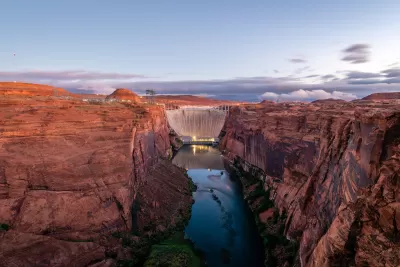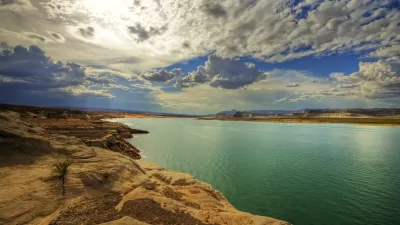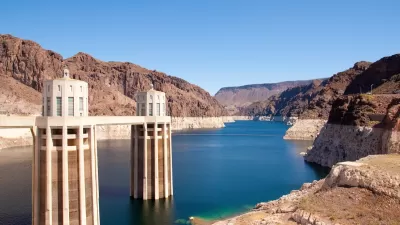Many of the nation’s largest dam projects are reaching the end of their useful lives, helped along by nature.

In an opinion column in Governing, Richard Parker outlines the state of the nation’s dams, many of which have been producing hydroelectric power and storing water for over a hundred years.
As Parker explains, “Once the height of engineering marvels, the great dams of the early 20th century have outlasted their questionable usefulness.” Many dams are now poorly maintained, clogged with silt, and pose an increasingly high risk of catastrophic failure.
Now, many of these dams are being removed “after declining in their power output and providing unpredictable sources of water — not to mention their massive environmental damage to fish, Native American cultures and the land itself.”
Parker describes the history of dams in the American West and their key role in the development of population centers in the arid Southwest, as well as the convergence of factors that makes their utility more and more limited. For Parker, the recent recognition of the damage dams cause and the movement to remove them is “part of the rewilding of America, long overdue.”
FULL STORY: American Dams Are Being Demolished. And Nature Is Pushing that Along.

Maui's Vacation Rental Debate Turns Ugly
Verbal attacks, misinformation campaigns and fistfights plague a high-stakes debate to convert thousands of vacation rentals into long-term housing.

Planetizen Federal Action Tracker
A weekly monitor of how Trump’s orders and actions are impacting planners and planning in America.

In Urban Planning, AI Prompting Could be the New Design Thinking
Creativity has long been key to great urban design. What if we see AI as our new creative partner?

King County Supportive Housing Program Offers Hope for Unhoused Residents
The county is taking a ‘Housing First’ approach that prioritizes getting people into housing, then offering wraparound supportive services.

Researchers Use AI to Get Clearer Picture of US Housing
Analysts are using artificial intelligence to supercharge their research by allowing them to comb through data faster. Though these AI tools can be error prone, they save time and housing researchers are optimistic about the future.

Making Shared Micromobility More Inclusive
Cities and shared mobility system operators can do more to include people with disabilities in planning and operations, per a new report.
Urban Design for Planners 1: Software Tools
This six-course series explores essential urban design concepts using open source software and equips planners with the tools they need to participate fully in the urban design process.
Planning for Universal Design
Learn the tools for implementing Universal Design in planning regulations.
planning NEXT
Appalachian Highlands Housing Partners
Mpact (founded as Rail~Volution)
City of Camden Redevelopment Agency
City of Astoria
City of Portland
City of Laramie




























